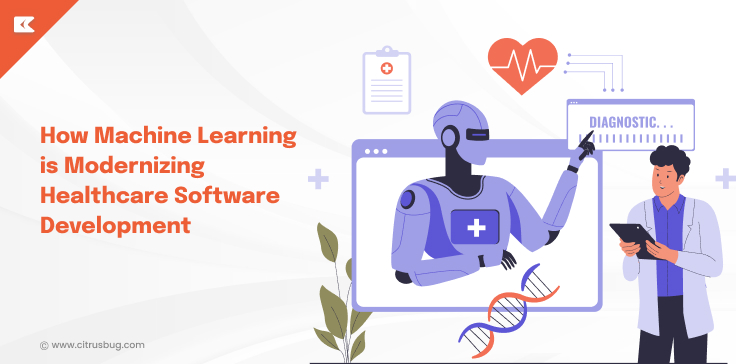Machine Learning vs Generative AI: Understanding the Difference
- July 25, 2024
-
3305 Views
- by Ishan Vyas
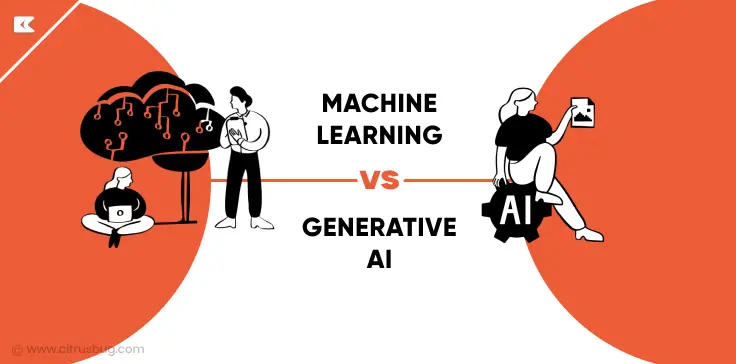
Machine Learning and generative AI both are subset of AI and both are powerful tools. These both have different purposes and fundamental approaches. In this article we will see the overview of Machine Learning and Generative AI, their use cases in various industries and the key difference between them.
First things first, you need to know what these two AI subfields are and what their guiding principles are before you can actually understand the differences between them.
Understanding Generative AI
Generative AI is a subset of artificial intelligence focused on creating new content. The technology uses generative models designed to generate data that reflect the distribution of a particular dataset. Once trained, These models can generate new data points statistically similar to the training data. This innovation can extend to text, images, text-to-video, audio, and video, giving people new ways to be creative and solve problems.
Generative AI uses deep learning networks, like Generative Adversarial Networks (GANs) and Variational Autoencoders (VAEs).
- Generative Adversarial Networks (GANs): Comprise of two neural networks that cooperate to produce new content. The first network produces tests and the other network assesses the tests and gives feedback.
- Variational Autoencoders (VAEs): Utilize a probabilistic approach to learn a compressed representation of the input data and produce new examples from this representation.
ChatGPT, Jasper Chat, and Google Bard are some of the best examples for generative AI in content generation. Similarly, tools such as an AI background changer reflect how generative AI is revolutionizing visual content creation. The field of content generation has reached new heights thanks to advanced language models. These AI applications use natural language processing (NLP) to compose essays, write poems, tell jokes, and conduct human conversations at the user’s command.
Real-world Use cases of Generative AI for different industries
Healthcare: Assist clinicians reach an early diagnosis by assisting radiologists with identifying cancer spots in medical images. Gen AI is exceptional at transcribing speech to text, understanding huge, unstructured information to identify anomalies quicker and better than a human. As indicated by Accenture, AI might possibly improve 40% of healthcare providers’ functioning hours. Generative AI is also powering advanced audio to text tools, enabling healthcare businesses to quickly transcribe conversations, and consultations into searchable text, which boosts productivity and accessibility.
Generative AI can create a personalized treatment plan for each patient by taking into account a large amount of patient data, such as medical images and genetic testing.
Finance & Banking: Generative artificial intelligence in finance and banking has empowered another extent of outstanding advancement, for example, a better comprehension of financial literacy and improvisation of fundamental fakes.
As per statistics, revealed by Market research, the assessed market valuation of Generative AI in financial service is around $1.85 billion in 2023 and is projected to reach $9.48 billion by 2032.
Marketing: Generative AI in marketing enables advertisers to create significant, convenient, and reliable customer experiences easily. From discovering segmentation insights to creating client journeys, producing content, and automating two-way unstructured conversations, generative AI streamlines the process, empowering marketers to convey revenue-boosting campaigns within minutes rather than days.
Generative AI offers advertising and marketing professionals a multitude of solutions, such as generating the text and images required for marketing purposes and finding new ways to interact with customers. One way to streamline this process is by utilizing marketing report templates, which can help organize and present data effectively.
Media and Entertainment: Companies in the media and entertainment industries are already making use of virtual reality (VR) and augmented reality (AR) technologies. Generative AI has the potential to make these endeavors more seamless and successful. Media companies can use generative AI to create captivating experiences that blur the lines between reality and fiction in the metaverse.
According to IDC, enterprises have spent over $19.4 billion on generative AI in 2023 and will spend more than double this year.
Understanding Machine Learning
Machine Learning is a subset of AI that analyzes and draws inferences from patterns discovered within data. It includes preparing algorithms on datasets, allowing them to recognize designs, make predictions, and work on their performance over time. Machine Learning is a sort of limited or weak AI, intended to perform a particular task, like image grouping, speech recognition, or natural language processing.
Types of Machine Learning Algorithms
- Supervised Learning: The algorithms learn from labeled data, where the correct output is provided for a given input.
- Semi-supervised Learning: Semi-supervised learning is very much like supervised learning, yet rather utilizes both labeled and unlabeled information. Labeled data is basically data that has significant labels so the algorithm can understand the information, while unlabeled data comes up short on data.
- Reinforcement Learning: Reinforcement learning centers around regimented learning experiences, where a machine learning algorithm is given a set of actions, boundaries and end values.
- Unsupervised Learning: The unsupervised learning algorithm is trained on unlabeled data, and it must identify patterns or relationships on its own. The algorithm tries to describe the structure of that data by organizing it in some way.
Real-World Use Cases of Machine Learning:
Because ML technology is so ingrained in our daily lives, you might not even notice it in the technologies we use every day. It is exciting to see how it is supporting faster and more effective execution of some business operations and industries, revealing patterns that humans are likely to miss, and improving our quality of life. If we look at machine learning trends, Many of the technologies you use every day are driven by ML models, and they have been doing so for years, from recommendation systems like those used by Netflix and Amazon to speech recognition systems like Siri and Alexa.
The following are real-world use cases of machine learning in our day-to-day lives that add value in a variety of ways, some large and some small.
Healthcare: Machine Learning supports diagnosing diseases by analyzing medical images or patient records more proficiently than human specialists. When evaluating mammograms for breast cancer, doctors miss 40% of cancers which ML can detect and help improve that figure.
Logistics & Transportation: Software that is based on machine learning development uses automated route building and better demand forecasting to cut costs and make operations even better. In the McKinsey study, organizations report their logistics costs further developed by 15% subsequent to executing automation technologies.
The best example of ML in transportation is Google Maps, which makes use of machine learning algorithms to check the conditions of the current traffic, choose the fastest route, suggest places to “explore nearby,” and estimate arrival times. ML is also used by ride-sharing apps like Uber and Lyft to match riders and drivers, set prices, look at traffic, and, like Google Maps, look at real-time traffic conditions to make the driving route more efficient and estimate how long it will take to get there.
Retail & e-commerce: By presenting the right crowd with customized offers, ML assists organizations with ROI improvement, increasing customer engagement and driving sales.
By identifying the offerings that might satisfy a particular customer’s interests, ML also contributes to the development of personalized marketing strategies. After that, it can tailor marketing materials to those interests.
Media Business: Machine Learning applications in the media business incorporate substance proposal, sentiment analysis, and customized advertising. Like retail and e-commerce ML use cases, the innovation helps media organizations identify behavioral trends in clients. Then, this information transforms into insights for personalization.
Key Difference: Machine Learning vs. Generative AI
Despite the fact that genAI and ML are both subsets of AI, their objectives, approaches, and applications are vastly distinct.
Objective
The objective of Generative AI is to create new data resembling the training set whereas the objective of ML is to learn from data to make predictions or decisions.
Applications
Both generative AI and ML have a wide number of applications, yet each of them excels at something different. ML can be used in predictive maintenance, fraud detection and recommendation systems. Generative AI can be used for creating content including text, image and video, synthetic data generation, creative problem solving and product design. It also contributes to the creation of spokesperson videos through AI-generated avatars and voice synthesis.
Techniques
Generative AI relies heavily on GANs and VAEs, dual learning networks. While machine learning can be categorized in different strategies like supervised, unsupervised, and reinforcement learning
Data Requirement
Generative AI can handle various formats including unstructured data to generate new content. On the other hand, ML can often work with smaller datasets for specific tasks. Plus, ML can use annotated data to have a structure for the data, making it more understandable for technology and more accessible to use in editing and conducting creative work.
User Interface
The ML application usually involves dashboards and visualizations that display analytical results, predictions, and trends. Generative AI interface generally includes tools for content creation like image creator or text editor.
Outcome
Probably the most significant difference among ML and generative AI is their individual purposes. ML is a tool for making decisions or predictions based on existing data. Generative AI models produce completely new data/content and work more as a creative assistance.
Conclusion
In summary, generative AI and machine learning are important tools in the modern business world, each with their own strengths: machine learning excels at extracting insights from existing data to improve decision-making, while generative AI pushes the boundaries of creativity by creating entirely new data, content, and possibilities. Businesses can unlock the potential to develop novel solutions, personalize experiences, and propel sector-wide innovation by utilizing generative AI development services.
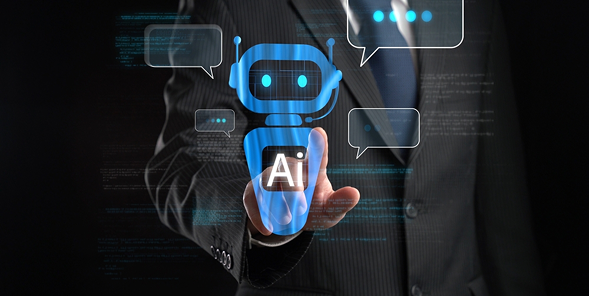


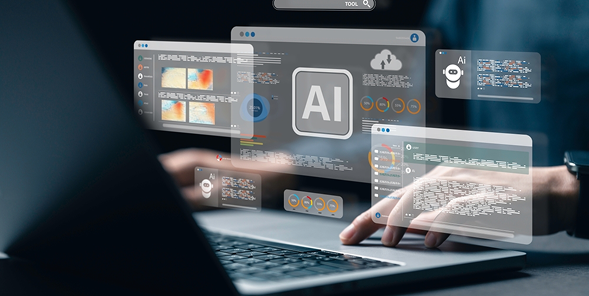

 SaaS Development
SaaS Development Web Application Development
Web Application Development Mobile Application Development
Mobile Application Development Custom Software Development
Custom Software Development Cloud Development
Cloud Development DevOps Development
DevOps Development MVP Development
MVP Development Digital Product Development
Digital Product Development Hire Chatbot Developers
Hire Chatbot Developers Hire Python Developers
Hire Python Developers Hire Django Developers
Hire Django Developers Hire ReactJS Developers
Hire ReactJS Developers Hire AngularJS Developers
Hire AngularJS Developers Hire VueJS Developers
Hire VueJS Developers Hire Full Stack Developers
Hire Full Stack Developers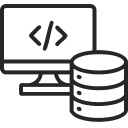 Hire Back End Developers
Hire Back End Developers Hire Front End Developers
Hire Front End Developers AI Healthcare Software Development & Consulting
AI Healthcare Software Development & Consulting Healthcare App Development
Healthcare App Development EHR Software Development
EHR Software Development Healthcare AI Chatbot Development
Healthcare AI Chatbot Development Telemedicine App Development Company
Telemedicine App Development Company Medical Billing Software Development
Medical Billing Software Development Fitness App Development
Fitness App Development RPM Software Development
RPM Software Development Medicine Delivery App Development
Medicine Delivery App Development Medical Device Software Development
Medical Device Software Development Patient Engagement Software Solutions
Patient Engagement Software Solutions Mental Health App Development
Mental Health App Development Healthcare IT Consulting
Healthcare IT Consulting Healthcare CRM Software Development
Healthcare CRM Software Development Healthcare IT Managed Services
Healthcare IT Managed Services Healthcare Software Testing services
Healthcare Software Testing services Medical Practice Management Software
Medical Practice Management Software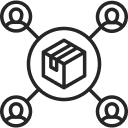 Outsourcing Healthcare IT Services
Outsourcing Healthcare IT Services IoT Solutions for Healthcare
IoT Solutions for Healthcare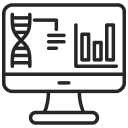 Medical Image Analysis Software Development Services
Medical Image Analysis Software Development Services Lending Software Development Services
Lending Software Development Services Payment Gateway Software Development
Payment Gateway Software Development Accounting Software Development
Accounting Software Development AI-Driven Banking App Development
AI-Driven Banking App Development Insurance Software Development
Insurance Software Development Finance Software Development
Finance Software Development Loan Management Software Development
Loan Management Software Development Decentralized Finance Development Services
Decentralized Finance Development Services eWallet App Development
eWallet App Development Payment App Development
Payment App Development Money Transfer App Development
Money Transfer App Development Mortgage Software Development
Mortgage Software Development Insurance Fraud Detection Software Development
Insurance Fraud Detection Software Development Wealth Management Software Development
Wealth Management Software Development Cryptocurrency Exchange Platform Development
Cryptocurrency Exchange Platform Development Neobank App Development
Neobank App Development Stock Trading App Development
Stock Trading App Development AML software Development
AML software Development Web3 Wallet Development
Web3 Wallet Development Robo-Advisor App Development
Robo-Advisor App Development Supply Chain Management Software Development
Supply Chain Management Software Development Fleet Management Software Development
Fleet Management Software Development Warehouse Management Software Development
Warehouse Management Software Development LMS Development
LMS Development Education App Development
Education App Development Inventory Management Software Development
Inventory Management Software Development Property Management Software Development
Property Management Software Development Real Estate CRM Software Development
Real Estate CRM Software Development Real Estate Document Management Software
Real Estate Document Management Software Construction App Development
Construction App Development Construction ERP Software Development
Construction ERP Software Development







